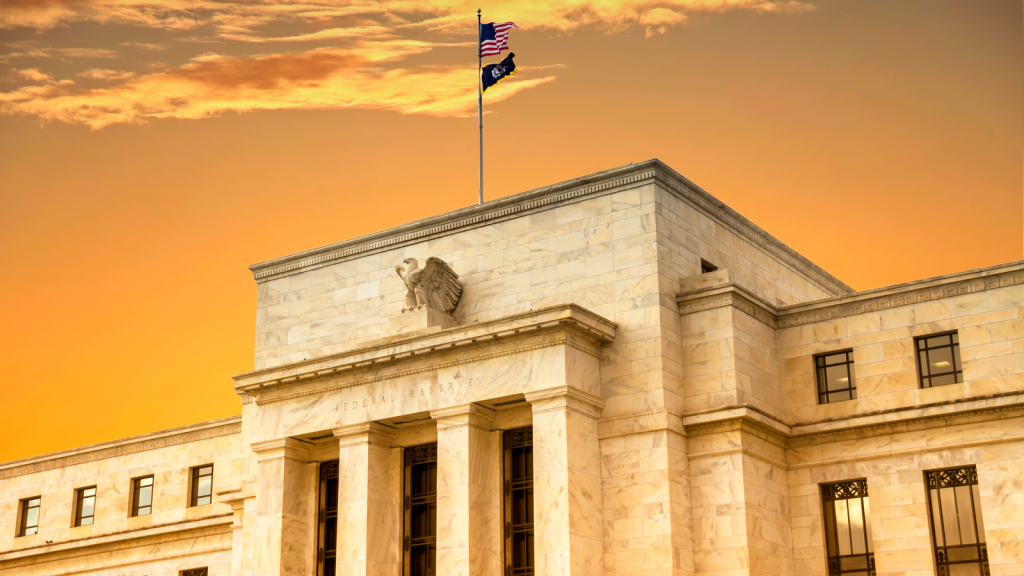
While the United States of America has been anticipating a 12th rate hike from the Federal Reserve, it’s safe to say that’s not happening anytime soon — for now.
Both investors and consumers have voted to keep the benchmark borrowing rate at par, which they voted on this month. However, this should not be taken as good news entirely, as officials are still fighting off inflation.
According to Jerome Powell, the Fed chair, officials were still unsure if they had raised interest rates high enough to steer clear of inflation. That message came after the Federal Open Market Committee’s (FOMC) November rate decision was released. Currently, the Fed’s average borrowing benchmark now sits at between 5.25% and 5.5% — a 22-year high.
It was only in September when the economic forecasts were last updated, and officials have expected the Fed to do one more interest rate increase before the year ends. If accepted, the Fed’s average benchmark borrowing interest rate could bring rates to a new 22-year high of between 5.5% and 5.75%.
If that were to happen, it could be the last rate hike. Only one official projected that rates would go higher than that in 2024.
What Does Having Higher Rates Mean?
Having higher rates only means one thing — more expensive borrowing costs. The prices consumers pay to borrow money will always depend on the Fed’s movement, regardless of how much the financing purchase on a credit card or auto loan costs.
However, the uncertainty is not bilateral. Not only are officials not convinced they need to make interest rates higher, but they are also unsure if the interest rates are high enough to battle inflation.
According to Powell, officials have not yet come to a decision if they will have future meetings regarding the matter. He also said they themselves wonder if they need to hike the interest rates more.
One reason the Fed has been raising borrowing costs and interest lately is because it is trying to tone down a fiery post-pandemic economy. Such has contributed greatly to the biggest inflation in history.
Although the Fed has seen some slight progress in keeping the balance in prices, it is still working hard on not failing. Increasing gas prices also contributed to an inflation pick-up for two months straight this summer. According to the Bureau of Labor Statistics, gas prices are now stabilizing at a 3.7% annual growth rate since August.
Should Interest Rates Be Increased?
Experts argue that the risks of withdrawing stimulus prematurely, potentially reigniting inflation, outweigh the risks of being too cautious. The Fed’s historical experience in the 1970s emphasizes the importance of restoring price stability to avoid prolonged economic challenges.
Although the U.S. economy is exhibiting signs of slowing, particularly in job growth, the current slowdown is not a cause for immediate concern, given the historically low unemployment rate despite substantial interest rate hikes by the Fed since March 2022.
The robust job market is allowing workers to recover ground lost to inflation, even though full paycheck restoration is pending. The Federal Reserve aims to gradually cool prices without adverse job market effects, fueled by strong consumer spending, with September’s consumption rising 0.7%. That spending contributed to a 4.9% growth in the financial system in Q3 2023, the fastest since 2021, according to GDP figures.
Economists emphasize that the recent rate hike signal aims to keep the Fed’s options open. Tuan Nguyen, an economist at RSM, underscores the importance of upcoming meetings, indicating the Fed will decide between pausing or proceeding with a hike.
How the Fed Measures the Cost of Money
Fed officials are cautious due to unexpected risks, recalling bank failures in March. A surge in long-term interest rates and the looming threat of a government shutdown complicates tracking inflation’s impact.
The Fed’s approach to future rate moves hinges on weighing conflicting factors. If experts are less concerned about an economic slowdown and more about persistent high inflation, a faster response might be warranted.
A Mixed Bag of Opinions From Investors and Analysts
While the Fed has expressed uncertainty about raising interest rates in forfeiting inflation, investors also have the same thoughts. In addition, investors are not confident the Fed will be able to keep interest rates the same.
Although the Fed has not decided yet, CME Group’s Fedwatch tool’s data shows that most market participants still think the Fed is done raising rates this year. Some experts adding to the pool included Morgan Stanley (NYSE:MS) and Moody’s Analytics.
The Federal Reserve might extend its pause due to the delayed impact of higher rates on the U.S. economy, taking up to a year for rate hikes to affect the job market. Raising rates is akin to driving while looking in the rearview mirror, and the Fed could risk slowing the economy too much. Despite a strong third quarter, higher rates may pose a recession risk, as historically observed with Fed rate hikes.
The likelihood of a recession is a concern, given historical patterns, as two out of the last three tightening cycles resulted in recessions. The Fed’s ability to impact the economy without rate hikes is limited, and if rates rise while inflation falls, it could lead to deflation and negatively impact the economy. So, what do you think? Are the Fed rate hikes over?
On the date of publication, Chris MacDonald did not hold (either directly or indirectly) any positions in the securities mentioned in this article. The opinions expressed in this article are those of the writer, subject to the InvestorPlace.com Publishing Guidelines.




